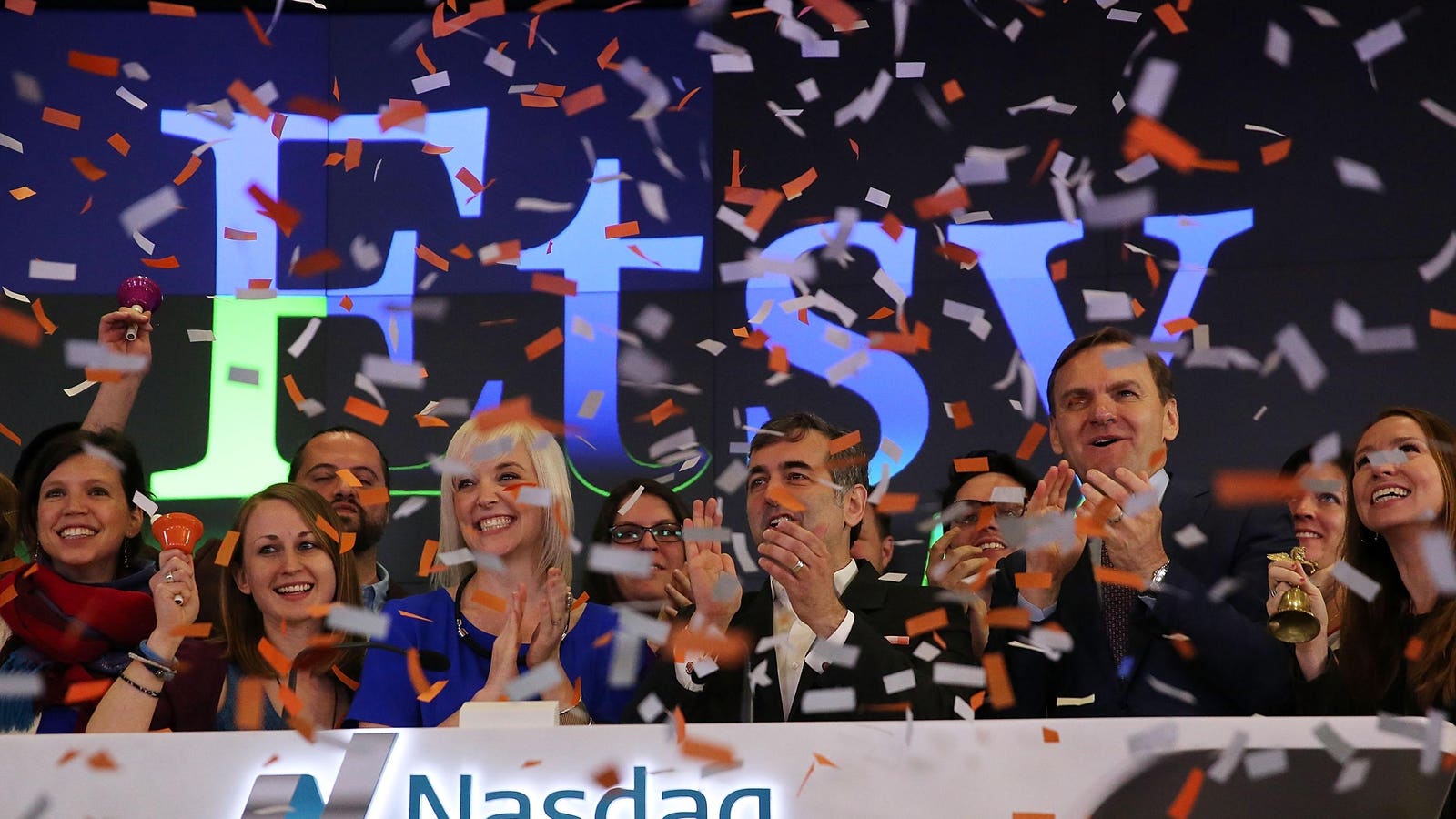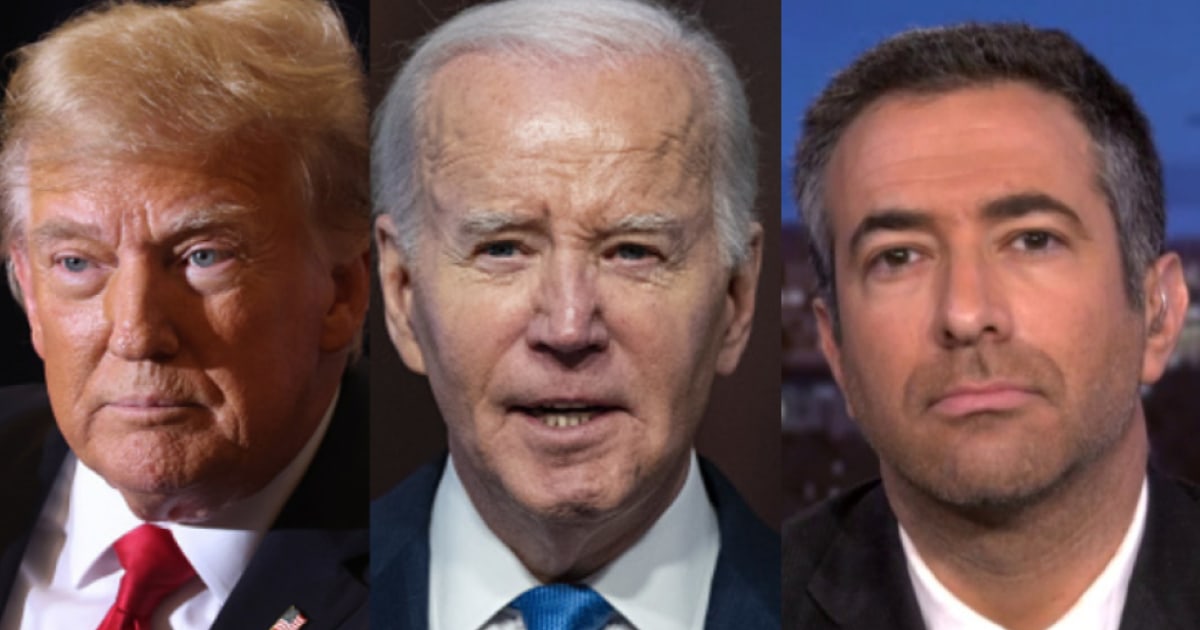ZeroHedge - On a long enough timeline, the survival rate for everyone drops to zero

www.zerohedge.com
Authored by Matthew Smith via Doug Casey's Take substack,
The Great Depression was a well-executed plan to seize assets, impoverish the population, and remake society. What comes next is worse...
A recent book by David Webb sheds new light on exactly what happened during the Great Depression. In Webb’s view, it was a setup.
Webb is a successful former investment banker and hedge fund manager with experience at the highest levels of the financial system. He published
The Great Taking a few months ago, and recently supplemented it with a video documentary. Thorough, concise, comprehensible and FREE. Why? Because he wants everyone to understand what’s being done.
The Great Taking describes the roadmap to collapse the system, suppress the people, and seize all your assets. And it includes the receipts.
You Already Own Nothing
Webb’s book illustrates, among other things, how changes in the Uniform Commercial Code converted asset ownership into a security entitlement. The “entitlement” designation made personal property a mere contractual claim. The “entitled” person is a “beneficial” owner, but not the legal one.
In the event a financial institution is insolvent, the legal owner is the “entity that controls the security with a security interest.” In essence, client assets belong to the banks. But it’s much worse than that.
This isn’t simply a matter of losing your cash to a bank bail-in.
The entire financial system has been wired for a controlled demolition.
Webb describes in detail how the trap was set, and how the Great Depression provides precedent. In 1933, FDR declared a “Bank Holiday.” By executive order, banks were closed. Later, only those approved by the Fed were allowed to reopen.
Thousands of banks were left to die. People with money in those disfavored institutions lost all of it, as well as anything they’d financed (houses, cars, businesses) that they now couldn’t pay for. Then, a few “chosen” banks consolidated all the assets in the system.
Centralization and Systemic Risk
As Webb shows, the cake has been baked for years. But this week came a sign it’s coming out of the oven. Last Monday,
Bloomberg admitted that measures taken to ostensibly “protect the system” actually
amplify risk.
In the wake of the 2008 financial crisis, G20 'leaders' mandated all standardized Over The Counter (OTC) derivatives be cleared through central counterparties (CCPs), ostensibly to reduce counter party risk and increase market transparency. The best known CCP in the US is the Depository Trust and Clearing Corporation (DTCC), which processes trillions of dollars of securities transactions each day.
Before 2012, OTC derivative trades were bi-lateral and counterparty risk was managed by parties to a transaction. When doing business directly with other firms, each had to make sure it was dealing with reliable parties. If they had a bad reputation or were not creditworthy, counterparties could consider them toxic and shut them out of trades. This, according to the wise G20 leadership, was too risky.
With the introduction of central clearing mandates, counterparty risk was shifted via CCPs away from the firms doing the deal to the system itself. Creditworthiness and reputation were replaced with collateral and complex models.
Brokers, banks, asset managers, hedge funds, corporations, insurance companies and other so-called "clearing parties" participate in the market by first posting collateral in the form of Initial Margin (IM) with the CCP. It's through this IM and a separate and much smaller Default Fund (DF) held at the CCP that counterparty risk is managed.
To ‘Mutualise’ Losses
Shifting risk from individual parties to the collective is a recipe for trouble. But, as explained in a recent
report from the BIS, it's worse than that. The structure of CCPs themselves can cause "Margin Spirals" and "wrong-way risk" in the event of market turbulence.
In flight-to-safety episodes, CCPs hike margin requirements. According to the BIS,
"Sudden and large IM hikes force deleveraging by derivative counterparties and can precipitate fire sales that lead to higher volatility and additional IM hikes in so-called margin spirals."
We've already gotten a taste of what this can look like. Similar margin spirals "occurred in early 2020 (Covid-19) and 2022 (invasion of Ukraine),
reflecting the risk-sensitive nature of IM models."
Government Bonds as a source of trouble
The second area of systemic risk is the dual use of government bonds as both collateral and as underlying assets in derivatives contracts. Volatility in the government bond market can lead to a demand for more collateral underlying the derivatives markets precisely when government bond prices are declining. Falling bond prices erode the value of the existing IM. Collateral demands skyrocket just as the value of current and would-be collateral is evaporating.
Again, the BIS:
Wrong-way risk dynamics appeared to play a role during the 2010–11 Irish sovereign debt crisis. At that time, investors liquidated their positions in Irish government bonds after a CCP raised the haircuts on such bonds when used as collateral. This led to lower prices of Irish government bonds triggering further haircuts, further position closures and ultimately a downward price spiral.
Designed to fail
The BIS doesn’t admit it, but Webb says the CCPs themselves are deliberately
under-capitalized and designed to fail. The start-up of a new CCP is planned and pre-funded. When that happens, it’ll be the “secured creditors” who will take control of ALL the underlying collateral.
Once more, the BIS:
…to mutualise potential default losses in excess of IM, CCPs also require their members to contribute to a default fund (DF). As a result, CCPs are in command of large pools of liquid assets.
That “large pool of liquid assets” is the
full universe of traded securities.
In a market collapse, the stocks and bonds you think you own will be sucked into the default fund (DF) as additional collateral for the evaporating value of the derivatives complex. This is “The Great Taking”.
Buffett’s famous line rings true: “You only find out who is swimming naked when the tide goes out.” Most of us are on the verge of learning that we’re the ones without any clothes.
If you haven’t read “
The Great Taking” or watched the documentary, I recommend you pour yourself a stiff drink and watch it now:
Forbes
Hundreds of U.S. companies have slashed their workforces this year, including Amazon, Google, Meta and Disney.

www.forbes.com
Updated Dec 14, 2023, 12:06pm EST Brian Bushard Forbes Staff
Topline
General Motors’ Cruise robotaxi unit will reportedly cut roughly 900 employees, as the self-driving car unit continues to face fallout and reduce spending over safety concerns, making it the latest major U.S. company to reduce its head count this year (see Forbes’ layoff tracker from earlier this year
here).

December 14
GM confirmed the cuts—affecting 24% of
Cruise’s workforce—in a statement to CNBC, one month after the automaker announced it would
halt operations on all public roads and
said it would “substantially” cut spending over mounting safety concerns (Forbes has reached out to GM for confirmation).
December 13
Etsy CEO Josh Silverman announced the cuts—affecting 11% of the online marketplace’s workforce—in a
press release on Wednesday, attributing the layoffs to a “very challenging macro and competitive environment” and a rise in employee expenses even after the company implemented a hiring pause, saying: “This is ultimately not a sustainable trajectory and we must change it.”
December 12
Hasbro, which already cut
800 employees this year, will cut another 1,100 of its roughly 6,500 employees, CEO Chris Cocks said in an
internal memo shared with Forbes, telling employees the “market headwinds we anticipated have proven to be stronger and more persistent than planned.”
December 11
State Street is planning to cut approximately 1,500 employees at the start of 2024, with CFO Eric Aboaf saying the Boston-based financial company expects to incur $175 million to $200 million in severance costs, the Boston Globe
reported.
December 8
E-commerce company
Zulily will cut over 800 employees, including 292 in Washington,
according to a state Worker Adjustment and Retraining Notification, and 550 in
Nevada and
Ohio, according to state notices—nearly eight months after the company was bought by California private equity firm Regent.
December 4
Spotify CEO Daniel Ek announced the layoffs in a
memo to employees Monday morning, saying the company will cut 17% of its staff—estimated to affect 1,500 employees—in a cost-cutting move Ek said would “ensure we are right-sized for the challenges ahead,” citing a slowdown in economic growth, adding: “Spotify is not an exception to these realities.”
December 4
After
letting go of more than 1,500 employees in February, Jeff Lawson, the CEO of San Francisco Bay-area communications giant
Twilio, told employees the company is planning another round of cuts affecting 5% of its workforce—estimated to affect roughly 300 more employees.
November 30
Layoffs at
Broadcom, which follow the semiconductor manufacturer’s $69 billion purchase of cloud computing company VMware, will affect more than 1,200 positions in California, the San Francisco Chronicle
reported, citing a state filing, in addition to another 184 employees set to be cut in Colorado, 217 in Georgia and 167 in New York, according to state Worker Adjustment and Retraining Notifications.
November 27
Our Next Energy, a Michigan-based EV battery startup, cited “market condition” for its decision to cut 25% of its staff (estimated to affect 128 of its roughly 500 hourly and salaried employees), according to an internal email obtained by
multiple outlets.
November 20
After laying off roughly 7,000 employees so far this year,
Citi’s layoffs will reportedly affect 300 senior management positions, sources told
Bloomberg, representing roughly 10% of Citi’s senior management but only a drop in the bucket of the banking giant’s nearly 190,000 employees—Citi did not comment on the number of employees affected by the layoffs, though in a statement, the company called the cuts the “right steps to align our structure with our strategy and ensure we consistently deliver excellence to our clients.”
November 17
Amazon issued a memo to employees Friday morning announcing plans to cut “several hundred” employees in an effort to “better align with our business priorities,” citing the company’s push into generative AI—the layoff comes less than a week after the tech giant cut another 180 employees in its gaming division.
November 16
Advance Auto Parts will cut 400 employees, including from its Raleigh, North Carolina, headquarters, as part of a cost reduction plan aimed at “stabilizing” and “return to profitable growth,” CEO Shane O’Kelly said in a statement, as the company looks to save $150 million annually.
November 15
Layoffs at pet supply company
Chewy will affect more than 200 employees at its Plantation, Florida, headquarters, as well as other location across the U.S., TechCrunch
reported, though the job cuts are estimated to affect only 1% of the PetSmart-owned company’s more than 19,000 employees, according to PitchBook (Forbes has reached out to Chewy for confirmation).
November 9
Dish Network plans to lay off more than 500 employees, a spokesperson told
Forbes, citing “changing business demands on some teams,” just days after Dish Network Corp’s shares plummeted to a 25-year low ($3.52 per share) on the heels of a disappointing earnings report that fell short of Wall Street expectations.
November 8
Nextdoor’s cuts are expected to affect roughly 176 of its more than 700 employees, according to a
financial filing, amid “a difficult advertising backdrop” as the platform looks to align its expenses and workforce with “near term revenue expectations,” CEO Sarah Friar said in a statement.
November 7
Pfizer will lay off 781 employees at a facility in Gladstone, New Jersey,
according to a state Workers Adjustment and Retraining Notification, as sales of its Covid vaccine drop, though a Pfizer spokesperson told
Forbes affected employees will be able to relocate or else be terminated—the cut comes less than a month after the pharmaceutical giant
reduced its 2023 revenue estimate by $9 billion and unveiled a massive
cost-cutting initiative expected to save it $3.5 billion.
November 2
Panera said it will cut 17% of its 1,800 corporate positions in an internal memo cited by the
Wall Street Journal, with a spokesperson telling
Forbes the cuts are intended to “better align” the chain’s “support structure with our strategy.”
November 1
Charles Schwab’s layoffs will affect between 5% and 6% of its workforce, which stood at nearly 36,000 as of the end of September, a spokesperson for the financial consulting company confirmed to
Forbes, as the firm looks to slash roughly $500 million in a cost-cutting initiative aimed at remaining “highly competitive, with industry-leading levels of efficiency, well into the future.”
November 1
Condé Nast, the publisher behind
The New Yorker, Vanity Fair and
Vogue, will cut roughly 5% of its roughly 6,000 employees (approximately 250 positions), according to an
internal memo from CEO Roger Lynch, who said in a statement: “we are in an industry that is changing.”
November 1
Splunk CEO Gary Steele announced the layoffs, which affect 7% of the company’s workforce, in a
memo to employees, saying the “overall market has retracted and we expect the macro environment will continue to be unpredictable” —Splunk’s layoffs come six weeks after it was purchased in a whopping
$28 billion deal by tech giant Cisco and after Cisco laid off 350 employees.
Continued (into April 3)
Big Number
136,000. That’s how many employees were cut in major U.S. layoffs over the first three months of 2023—more than the previous two fiscal quarters combined, led by massive head count reductions at Amazon, Google, Meta and Microsoft, according to
Forbes’ tracker.
Contra
Despite massive layoffs continuing at many large companies over the first few months of 2023, the U.S. labor market still managed to
add 236,000 jobs in the month of March while the unemployment rate dropped to 3.5% from 3.6% in February, according to Labor Department data—though it was the smallest increase in total employment since December 2020, sparking fears among economists that a recession could be under way.
Key Background
Large U.S. companies ranging from tech startups to manufacturers, retailers and banks conducted a series of
major layoffs last summer—with
nearly 125,000 U.S. employees affected by cuts at more than 120 large U.S. companies between June and December, according to
Forbes’ tracker. Employers feared high inflation and multiple rounds of interest rate hikes by the Federal Reserve could throw the economy into recession. Nearly half of those cuts came in the months of November and December, led by massive reductions at Amazon, which cut 10,000 employees, and Facebook and Instagram parent company Meta, which cut 11,000 employees. Amazon and Meta both unveiled new rounds of cuts in March.
Further Reading
‘Economy Is Unwell’: Job Growth Unexpectedly Slows As Employers Scale Back Wages And Freeze Hiring (Forbes)
136,000 Laid Off In Major U.S. Job Cuts This Quarter—More Than Prior Two Quarters Combined (Forbes)
Labor Market Adds 236,000 Jobs In March—Lowest Since 2020—As Economists Worry Recession May Be ‘Underway Now’ (Forbes)
How To Bounce Back After Being Laid Off — Introducing Layoff Lifeline, A Weeklong Email Course (Forbes)
MSNBC promotes the Illusion that the economy under Biden is just fine

The economy added 14 million new jobs under President Biden, more than double the number of jobs created under Donald Trump. But according to a new poll, more Americans trust Trump over Biden with the economy. MSNBC’s Ari Melber is joined by Political Strategist Chai Komanduri and L.A. Times...

www.msnbc.com
Video
The economy added 14 million new jobs under President Biden, more than double the number of jobs created under Donald Trump. But according to a new poll, more Americans trust Trump over Biden with the economy. MSNBC’s Ari Melber is joined by Political Strategist Chai Komanduri and L.A. Times Journalist Michael Hiltzik to discuss. (Check out The Beat's playlist:
https://msnbc.com/ari Connect with Ari Melber:
Login • Instagram. 15, 2023











